Over the weekend, I had some shower thoughts on people not cooking. Like, I get it. I didn’t cook a whole lot when I was on my own — it was much easier to order out — but at the time, it was takeout or nothing. Seamless had barely debuted, and it seemed like a complete novelty.
I’m clearly ancient.
That said, being without the option of DoorDash gave me some good insight into how to cook — a skill I really did not possess when I first struck out on my own, even though my mother and my grandmother were both incredible cook. I snagged a couple of Ina Garten books, watched a lot of Food Network, which, at the time, aired cooking shows instead of endless competitions between the same 20 chefs, and built my skill set, quite literally, from scratch.
Over the years, I’ve gotten some formal instruction, but nothing was really as instructive as those first few years making individual chicken breasts and sautéing them with ginger, garlic, and ramen noodles, thinking I was the first person in the world to come up with yakisoba.
Door Dash kinda makes that learning curve unnecessary, and even when it comes to cooking from recipes, most people pick and choose from what’s available on food blogs and trending on the TikTok oeuvre. The result is that people can often make food but they never quite learn how to cook, which is a skill you have to acquire. As a result of the piecemeal recipe-making process, I think people end up spending more time and money than is necessary to make their meals, especially if the recipes come from specialty outlets.
Eventually, they just give up; it really is cheaper and easier to just order out.
Since both formal (home economics) and informal (Molto Mario) instruction is no longer available, I promised to explain how to cook, and the first and only way to begin in that effort is to outline what’s needed to cook. First up, pantry items.
To explain the pantry, you need to think in terms of ROI. Yes, it has a more significant startup cost, but it’s a single purchase, or series of small purchases, that ultimately supplant (or should supplant) constant, more expensive trips out to the specialty grocery or the corner bodega just to get what’s necessary for a single recipe. It also makes meal planning and last-minute dinners easier, since you’re guaranteed to have at least something available with which to concoct, if nothing else, “tapas.”
To cook, as with any art or craft, you just need supplies.
Luckily for you, I have a supply list. Downloadable! AND an Amazon list (though, with the two caveats that, one, I make an affiliate commission and, two, the items are of a much larger quantity than would be necessary for any home kitchen and of my preferred brands, adjust for yourself as necessary).
Before we get to that though, a word of advice: you can do this.
I say this because I’m a girl’s girl, but also because we live in a society that overthinks everything. Just by cooking, you’re making healthier choices. You don’t need trendy fats or foods, and you don’t need to make fumes or gelees or layered dishes or Top Chef multi-course meals. You just need to make the first step. And look, nothing is perfect to start, and if you wait until you’re perfect at it, you’ll never do it again (I mean, just look at this Substack!).
Pantry items fall into a few key categories: baking necessities, spices and seasonings, dry goods, oils and sauces, and things you should keep in the fridge, which, while not necessarily part of the pantry, is home to much of what is necessary to cook food. Most of the items on the list have long shelf lives, though spices and other ingredients will lose their potency over time.
Baking Staples: While many of these are used for baking specifically, you should have things like all-purpose flour and panko bread crumbs on hand for cooking, too. I can do a lot with a fresh chicken breast and white flour, some salt and pepper. Add some chicken stock, lemon juice and capers and you have chicken piccata. Add mushrooms and cream and you have chicken scallopine. Dredge a floured chicken breast in panko crumbs and smother it with canned marinara and you’re half way to chicken parm.
Seasonings and Spices: Before anything else, you need a good flaky salt (I use Kosher salt which is less potent than iodized, but sea salts and table salt are also options) and a good pepper. If you can grind your own, great, but, to steal a phrase from Ina Garten, store bought ground pepper is fine. You’ll need a short list of spices to get you going and you can add later, in a more sustainable way, as you start to meal plan. Bay leaves, while notoriously useless, do add tannins to things like soups, stocks, and stews.
Dry Goods: These are the crucial elements — the bare minimum necessary — for cooking on the fly. You’ll need canned tomatoes of all different varieties, stick with San Marzano for flavor. Good chicken bullion can save a lot of time, even if you also stock…uhhh…stock. Jarred salsas, salad dressings, and good sauces can make quick marinades, brines, and braising liquid. Having quality items on hand doesn’t make you a less-good cook, especially if you aren’t quite ready to make those things yourself.
Oils and Sauces: Everyone should have a good extra-virgin olive oil for cooking and dipping, but bear in mind, things like olive oil, beef tallow, and butter have flavor, and sometimes a neutral-tasting oil, like canola oil, is necessary. Vinegars both impart flavor and break down protein, and we choose which vinegar to use based on the meal being cooked. As for soy sauce, low sodium works much better for cooking, since you can control the salt.
Refrigerator Necessities: I consider these self-explanatory — at least when it comes to butter and eggs. Commercial butter is fine. Commercial eggs are fine. Commercial parmesan cheese is not fine. At least get the shredded kind in the refrigerator case, not the shelf-stable powder (though that does have its uses!).
Other Stuff: The “other stuff” forms the basis for both cooking and entertaining. Onions and garlic are in almost every dish, so if you don’t have them on hand, you’ll never cook. Nearly every dish is made better by a carb-based side, so I stock various kinds of potatoes and rice. Never store onions and potatoes together, though, because they’re sworn enemies and will rot each other.
If there’s anything optional on this list, it’s in the “other stuff” category. Hate potatoes? Don’t stock them. Allergic to garlic? Pass it by. Granulated is sometimes easier to work with when you’re starting out and not yet ready to measure with your heart and the influence of the Holy Ghost. Hate sardines? Who needs natural umami anyway?
I’m sure you’ll have questions; drop them below.
Next week, we’ll discuss what kinds of pots, pans, and implements to buy (and yes, it’s fewer than you think you’ll need).

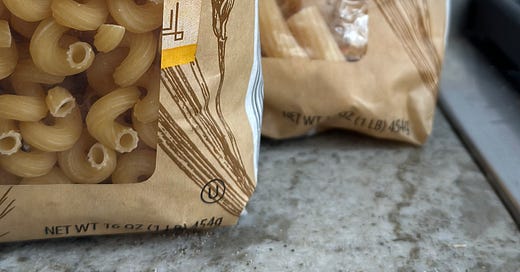


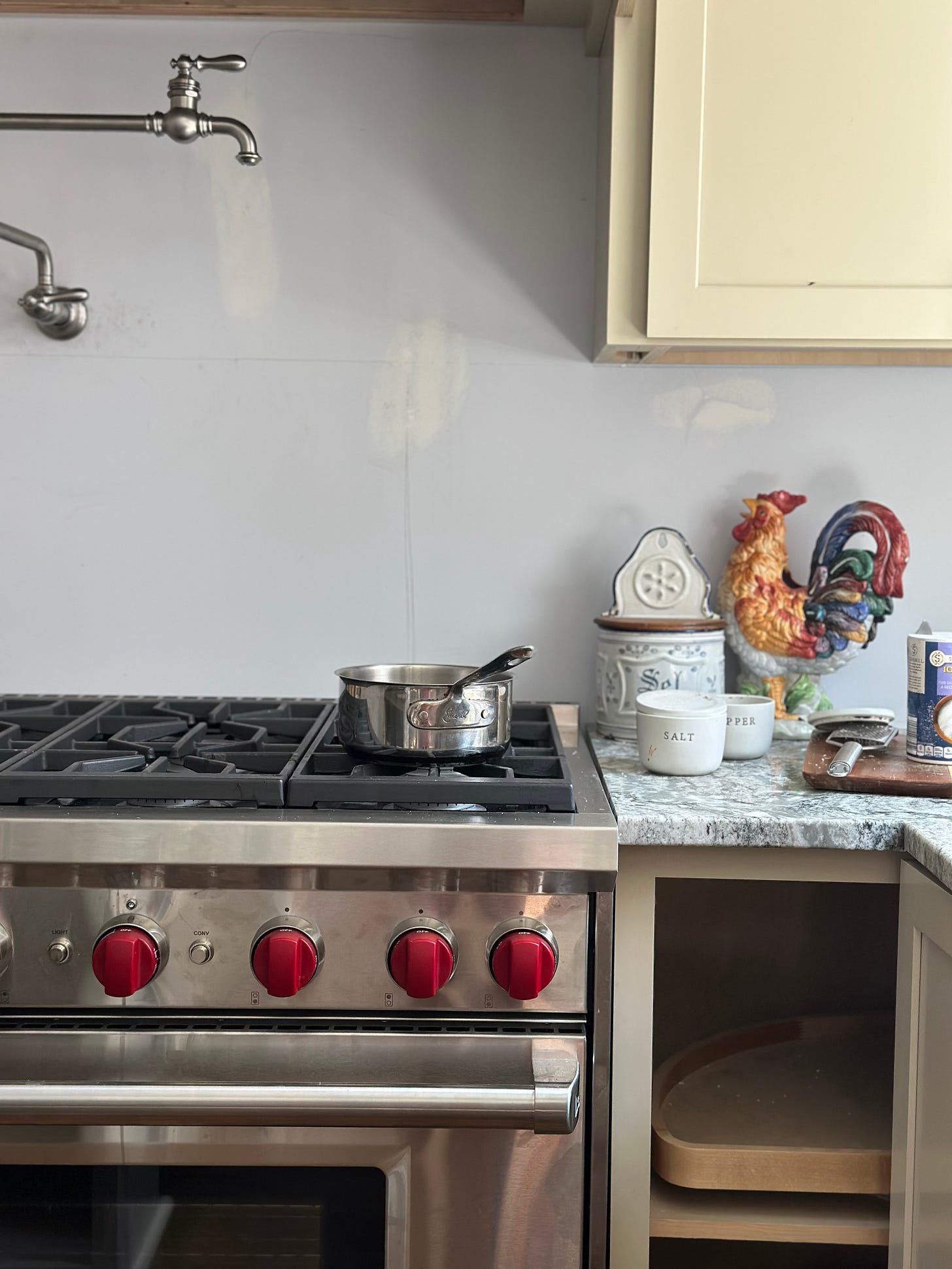
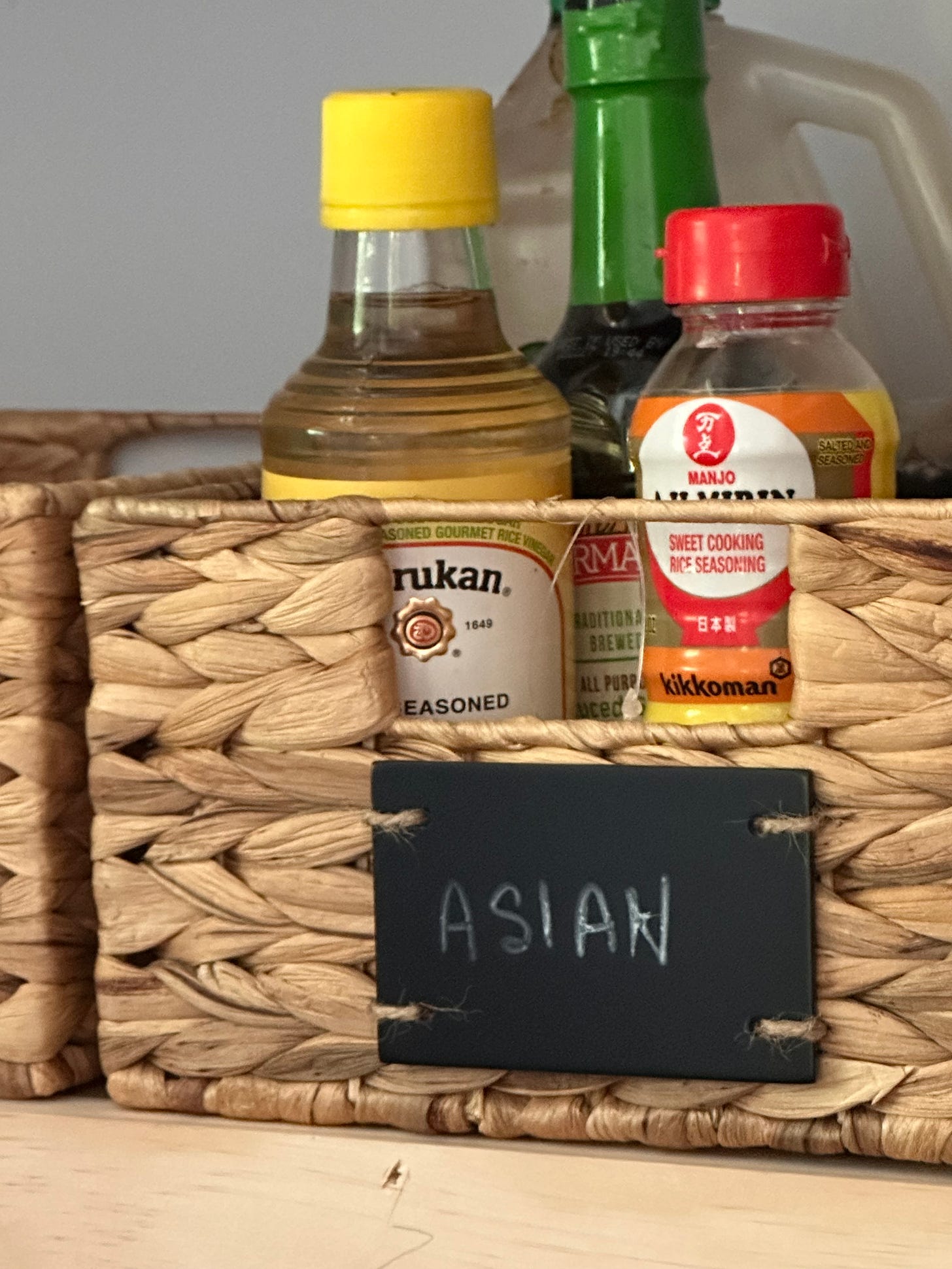
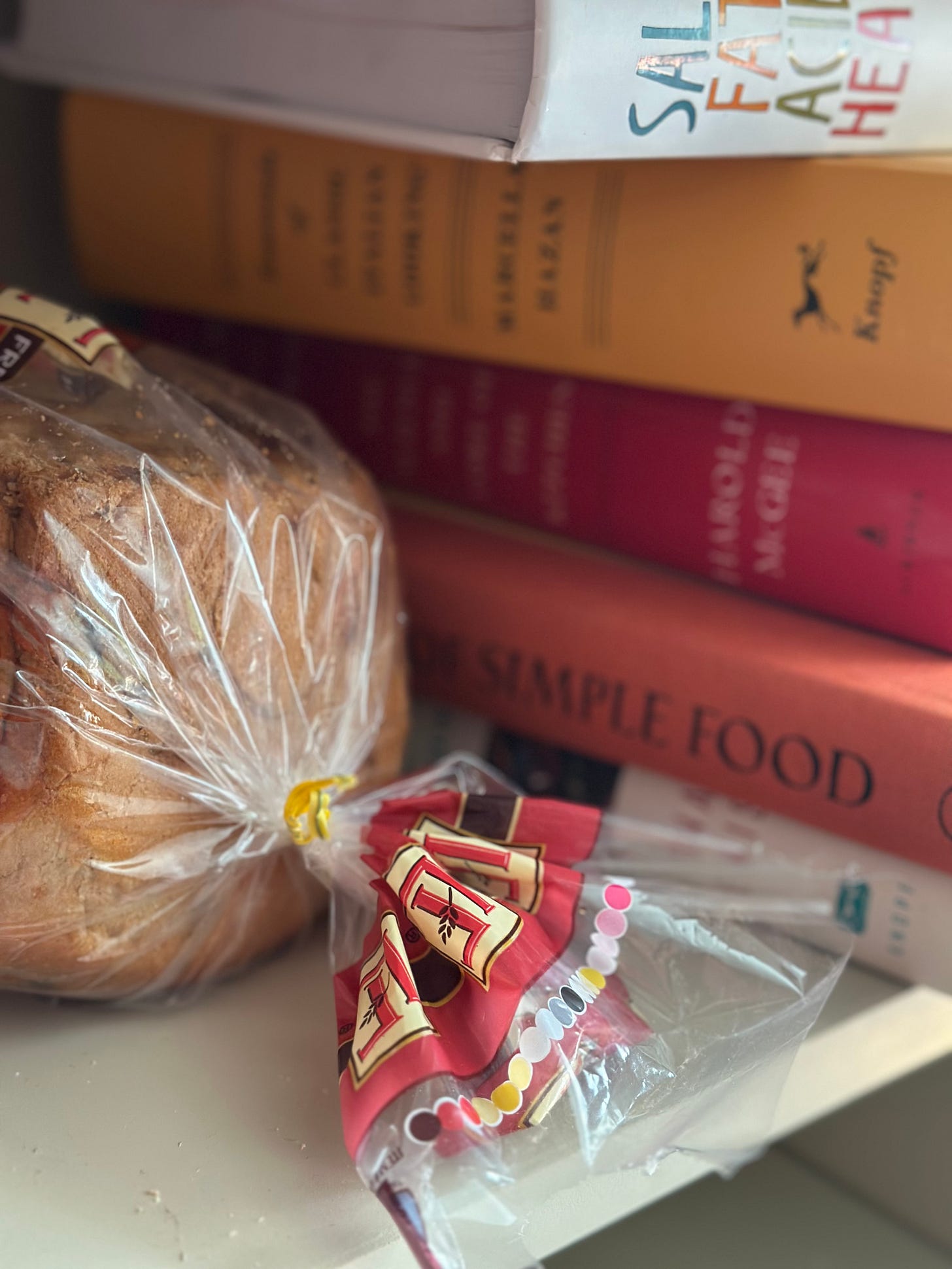
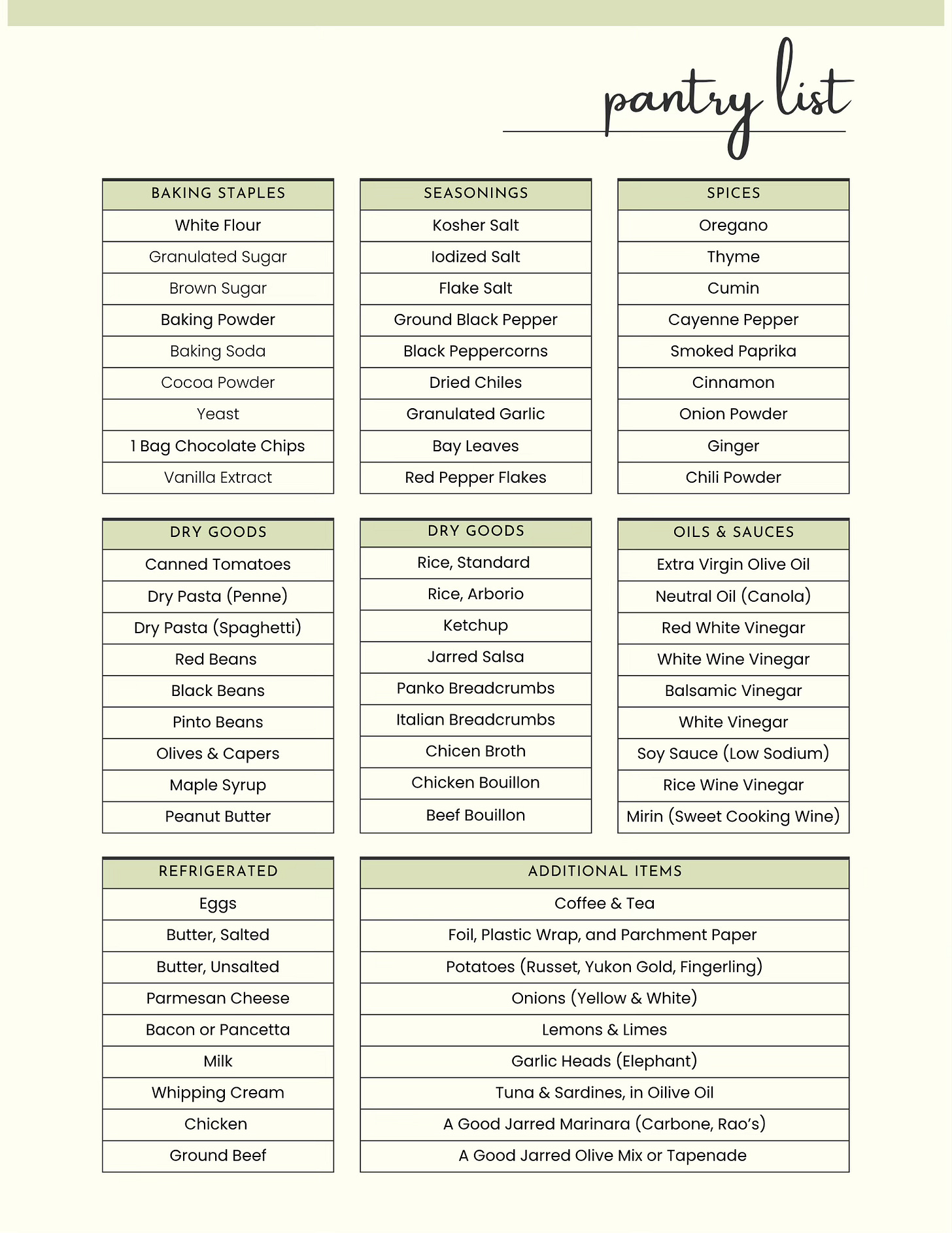
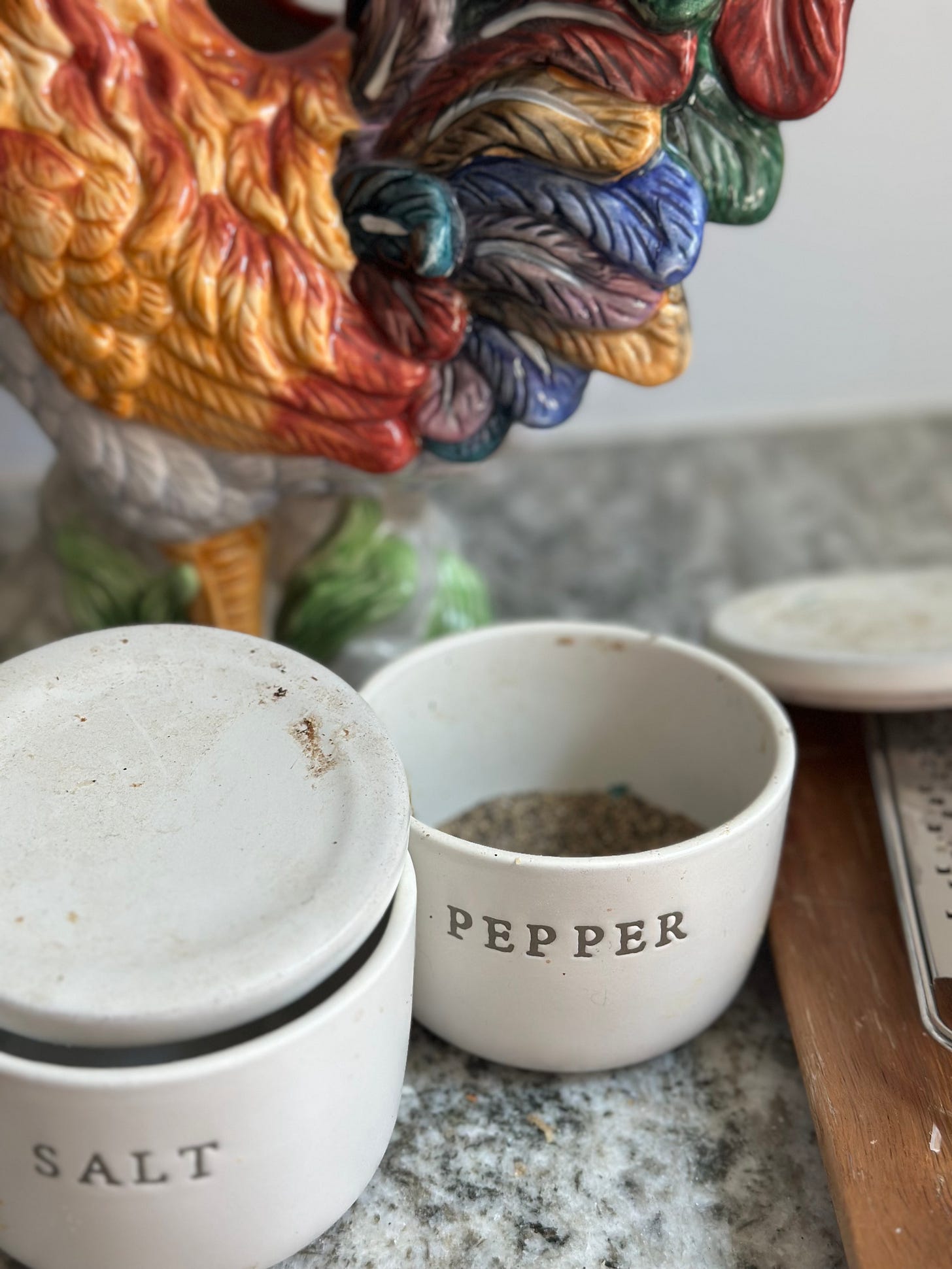

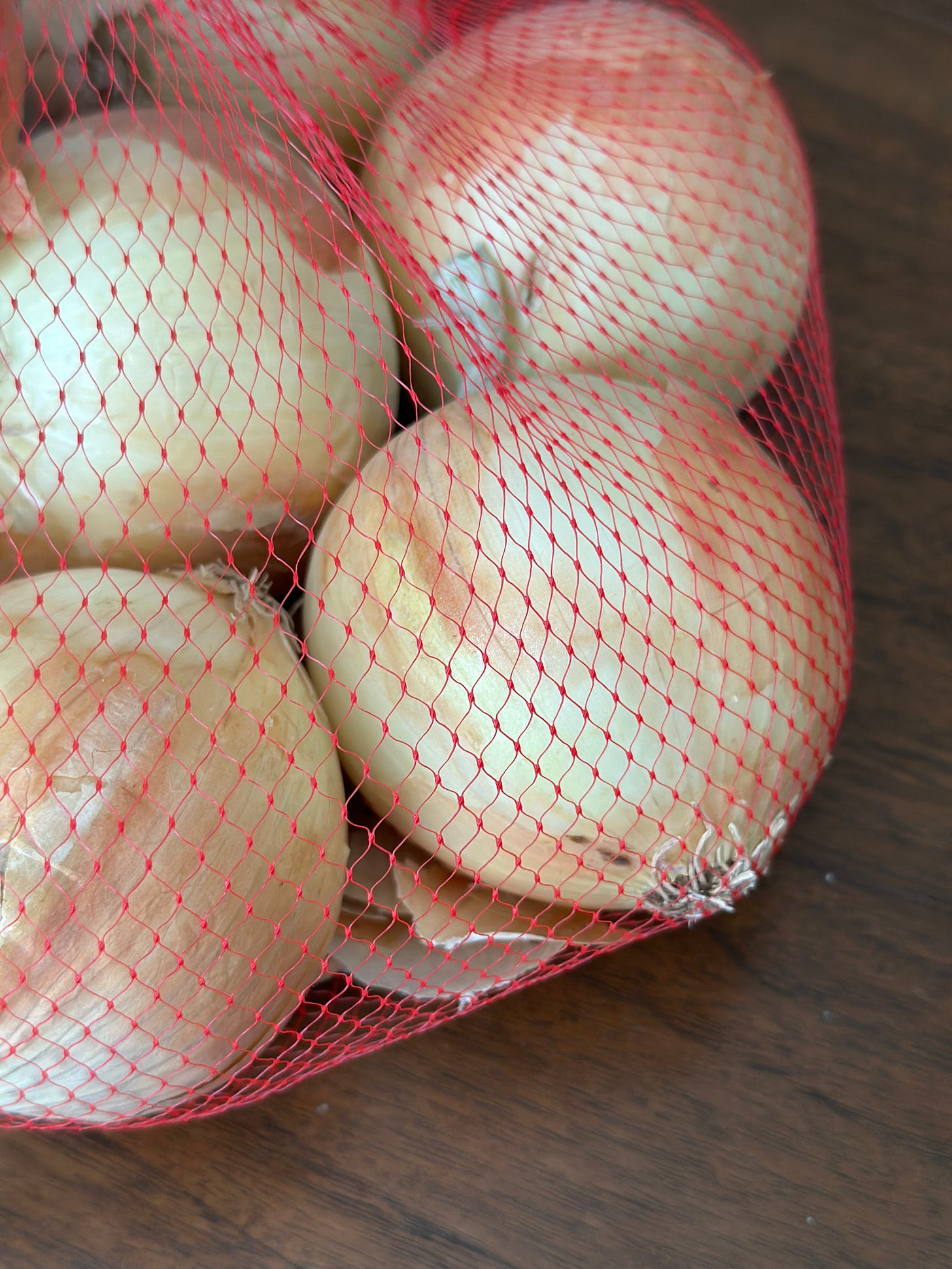
I like how you have the gallon of soy sauce on the shopping list.
(I have a gallon of Worcestershire sauce)
I tend to use Tamari instead of soy sauce, and depending, ponzu (depends on the dish).
This is a great core list. I had to stop eating pasta recently (and be scant on onions, garlic, etc), and my core grain is rice - switching more to the rice/tofu mix. But it's good for people to know one should have a certain variety of grains/baking goods/other pantry items that one has a wide variety of things to choose from. And it's pretty cheap once you look at it from how many meals/snacks you can get out of a core set of ingredients.
Thanks for sharing Emily!
I enjoy your farming and cooking posts, especially references to family cooking together. My mom's family came from Naples and I also didn't learn the sauces and such until leaving home. Love your countertop rooster!